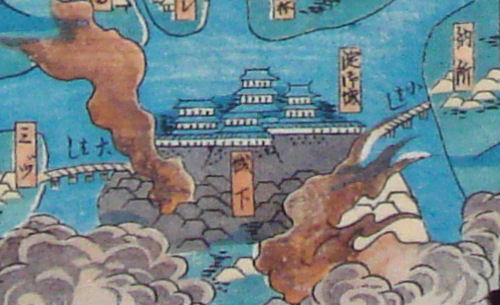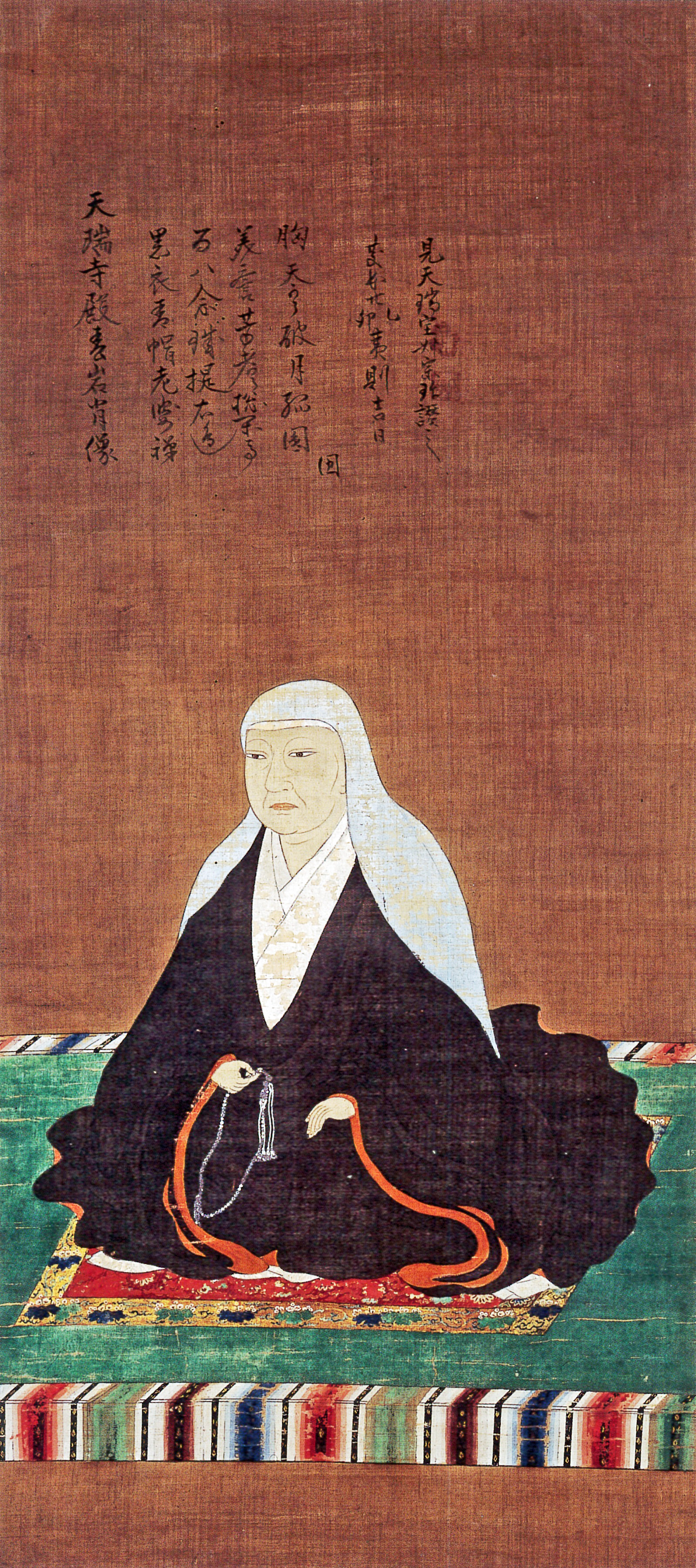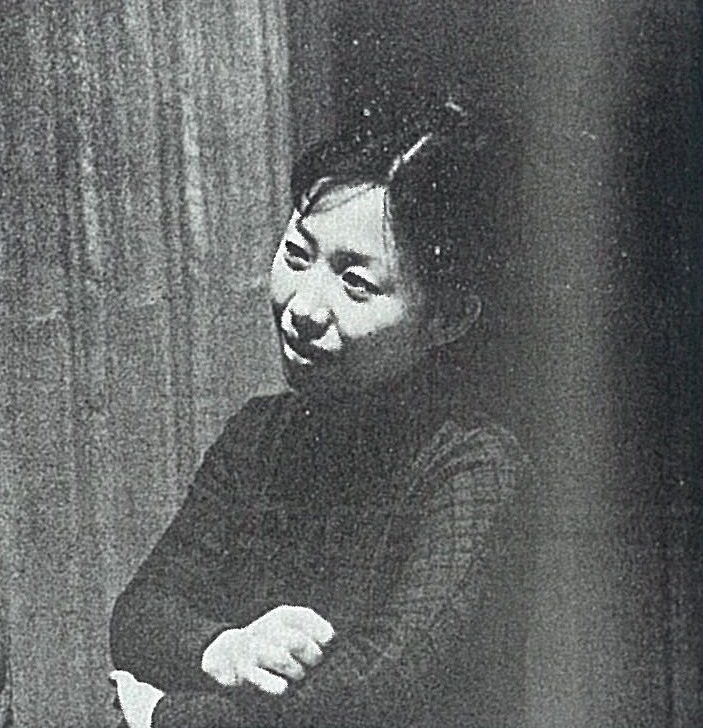|
Rikyu (film)
is Hiroshi Teshigahara's film about the 16th century master of the Japanese tea ceremony, Sen no Rikyū. The film was adapted from the novel of Yaeko Nogami. Synopsis The film focuses on the late stages of life of Rikyū, during the highly turbulent Sengoku period of feudal Japan. It starts near the end of Oda Nobunaga's reign, with Rikyū serving as tea master to Nobunaga, and continues into the Momoyama Period. Rikyū is portrayed as a man thoroughly dedicated to aesthetics and perfection, especially in relation to the art of tea. While serving as tea master to the new ruler Toyotomi Hideyoshi, Rikyū finds himself in a uniquely privileged position, with constant access to the powerful feudal lord and the theoretical ability to influence policy, yet he studiously avoids deep involvement in politics while attempting to focus his full attention to the study and teachings of the way of tea. To the extent that he expresses himself, he does so diplomatically, in a way to avoid disr ... [...More Info...] [...Related Items...] OR: [Wikipedia] [Google] [Baidu] |
Hiroshi Teshigahara
was a Japanese avant-garde filmmaker and artist from the Japanese New Wave era. He is best known for the 1964 film ''Woman in the Dunes''. He is also known for directing other titles such as ''The Face of Another'' (1966), ''Natsu No Heitai'' (''Summer Soldiers'', 1972), and '' Pitfall'' (1962) which was Teshigahara's directorial debut. He has been called "one of the most acclaimed Japanese directors of all time". Teshigahara is the first person of Asian descent to be nominated for the Academy Award for Best Director, accomplishing this in 1964 for his work on ''Woman in the Dunes''. Apart from being a filmmaker, Teshigahara also practiced other arts, such as calligraphy, pottery, painting, opera and ikebana. Biography Teshigahara was born in Tokyo, the son of Sōfu Teshigahara, founder and grand master of the Sōgetsu-ryū school of ''ikebana''. He graduated in 1950 from the Tokyo National University of Fine Arts and Music and began working in documentary film. He directed his ... [...More Info...] [...Related Items...] OR: [Wikipedia] [Google] [Baidu] |
Matsumoto Hakuō II
is a Japanese kabuki actor, one of the most popular ''tachiyaku'' (specialist in male roles) currently performing. Like many members of the kabuki community, he can trace his lineage back several generations, many members of his family being kabuki actors as well. His father and grandfather were the eighth and seventh, respectively, to hold the name of Matsumoto Kōshirō, and he traces his lineage back to his great-great-grandfather Nakamura Karoku I, if not further. Kōshirō's brother, Nakamura Kichiemon II, son Matsumoto Koshirō X and grandson Ichikawa Somegorō VIII are active in the kabuki theater as well, and his daughter, Takako Matsu is an experienced film actress. In addition, Kōshirō has a number of disciples, including Matsumoto Kingo III, Matsumoto Kōemon I, and Ichikawa Komazō XI. Life and career He made his stage debut in 1945, at the age of three, under the name Matsumoto Kintarō II, and took the name Ichikawa Somegorō VI four years later. He succ ... [...More Info...] [...Related Items...] OR: [Wikipedia] [Google] [Baidu] |
Junkichi Orimoto
was a Japanese actor. Orimoto often worked with Kinji Fukasaku and Sadao Nakajima. He started his acting career at the Shinkyō theatre company in 1949. His first film appearance was in the 1952 film ''Yamabiko Gakkō'' directed by Tadashi Imai. In 2019, he died of old age at the age of 92. His final film appearance was in the 2018 film ''blank13''. Filmography Films * ''Yamabiko Gakkō'' (1952) * '' Gakusei Shinjū'' (1954) * ''The Eternal Breasts'' (1955) as Shigeru Anzai * ''Mahiru no ankoku'' (1956) as Sugita * ''Jun'ai Monogatari'' (1956) as Detective * ''The Rice People'' (1957) as Fisherman * ''Planet Prince'' (1958) as Colonel Matsuda * ''Three Outlaw Samurai'' (1958) as Kurahashi * '' The Human condition Part1'' (1959) as Sai * ''Gang vs. G-Men'' (1962) as Yuichi Noguchi * ''Assassination'' (1964) as Kamo Serizawa * ''Revenge'' (1964) * ''Kwaidan'' (1965) * ''Live Today, Die Tomorrow!'' (1970) as Owner of rice store * '' Tora-san's Forget Me Not'' (1973) as Kurihara ... [...More Info...] [...Related Items...] OR: [Wikipedia] [Google] [Baidu] |
Ishida Mitsunari
Ishida Mitsunari (, 1559 – November 6, 1600) was a Japanese samurai and military commander of the late Sengoku period of Japan. He is probably best remembered as the commander of the Western army in the Battle of Sekigahara following the Azuchi–Momoyama period of the 16th century. He is also known by his court title, Jibu-no-shō (治部少輔). Early life He was born in 1559 at the north of Ōmi Province (which is now Nagahama city, Shiga Prefecture), and was the second son of Ishida Masatsugu, who was a retainer for the Azai clan. His childhood name was Sakichi (). The Ishida withdrew from service after the Azai's defeat in 1573 at the Siege of Odani Castle. According to legend, he was a monk in a Buddhist temple before he served Toyotomi Hideyoshi, but the accuracy of this legend is doubted since it only came about during the Edo period. Service under Hideyoshi Mitsunari met Toyotomi Hideyoshi in 1577, when the former was still young and the latter was the ''daimy ... [...More Info...] [...Related Items...] OR: [Wikipedia] [Google] [Baidu] |
Bandō Mitsugorō X
Bandō Mitsugorō X ( ja, 十代目 坂東 三津五郎) (January 23, 1956 – February 2, 2015) was a Japanese television presenter and kabuki actor. He was the grandson of Bandō Mitsugorō VIII and son of Bandō Mitsugorō IX. Filmography Films *'' Mishima: A Life in Four Chapters'' (1985) – Mizoguchi *'' Rikyu'' (1989) – Ishida Mitsunari *''Sharaku'' (1995) – Matsudaira Sadanobu *''Like Asura'' (2003) – Sadaharu Masukawa *'' Love and Honor'' (2006) – Tōya Shimada *'' Kabei: Our Mother'' (2008) – Shigeru Nogami *''The Lightning Tree'' (2010) – Tokugawa Ienari *'' Isoroku'' (2011) – Teikichi Hori Television *NHK Taiga drama series **''Katsu Kaishū'' (1974) – Tokugawa Iemochi **''Takeda Shingen'' (1988) – Suwa Yorishige **''Tokugawa Yoshinobu'' (1999) – Katsu Kaishū **''Kōmyō ga Tsuji'' (2006) – Akechi Mitsuhide *''On'yado Kawasemi'' (1981) – Masakichi *''Onihei Hankachō'' (1989) – Matsugorō and Heikichi *''Furuhata Ninzaburō is a Jap ... [...More Info...] [...Related Items...] OR: [Wikipedia] [Google] [Baidu] |
Yodo-dono
or (1569 – June 4, 1615) was a prominently placed figure in the late-Sengoku period. She was the daughter of Oichi and sister of Ohatsu and Oeyo. She was a concubine and second wife of Toyotomi Hideyoshi, who was then the most powerful man in Japan. She also became the mother of his son and successor, Hideyori. Her time period being that of large turmoil and overhaul, Yodo-dono had an interest toward both politics and administration. She actively acted in the restoration of the Toyotomi clan after the fall of the Council of Five Elders, as Hideyori's guardian. Alongside her son, Yodo-dono led the last anti-Tokugawa shogunate resistance in the siege of Osaka. When her two younger sisters became prominent members linked to the Tokugawa clan, Oichi's three daughters were vital to maintaining a diplomatic relationship between the two most powerful clans of the time, Toyotomi and Tokugawa. Her sister, Oeyo, was the wife of the second shogun, Tokugawa Hidetada, and matriarch of ... [...More Info...] [...Related Items...] OR: [Wikipedia] [Google] [Baidu] |
Sayoko Yamaguchi
Sayoko Yamaguchi (Japanese: 山口小夜子, September 19, 1949 – August 14, 2007) was a Japanese model and actress. Yamaguchi was a Yokohama native and a graduate of Sugino Gakuen's Dressmaker Gakuin design school in Tokyo. Yamaguchi broke into the international modeling industry in the 1970s. She was one of the first Asians to be featured in the world's top fashion shows and magazines. Yamaguchi made her debut in Paris in 1972. She went on to work in New York City and other international cities. Newsweek Magazine named her one of the world's top six fashion models in 1977. That year, she was featured on the cover of Steely Dan's '' Aja'' album. Yamaguchi went on to continue her career as a film and theater actress, as well as a costume designer. Death Yamaguchi died, aged 57, on August 14, 2007, of acute pneumonia Pneumonia is an inflammatory condition of the lung primarily affecting the small air sacs known as alveoli. Symptoms typically include some combinat ... [...More Info...] [...Related Items...] OR: [Wikipedia] [Google] [Baidu] |
Ōmandokoro
Ōmandokoro (大政所, 1516 – 29 August 1592) or Ōmandokoro Naka was the mother of the Japanese ruler Toyotomi Hideyoshi. She was also the mother of Asahi no kata, Tomo and Toyotomi Hidenaga. Biography It is said that Ōmandokoro was born in Gokisu-mura, Owari Province. She was married to Kinoshita Yaemon, an Ashigaru of the Oda clan. They had two sons, Tomo and Hideyoshi. She remarried when her husband died. There is some controversy whether Asahi no kata and Hidenaga were the children of her first or second husband. There are several accounts describing her role in Hideyoshi's court. One source cited that due to her serious illness in 1588, Hideyoshi ordered ceremonies at major Shinto and Buddhist temples at Ise, Kasuga, Gion, Atago, Kitano, Kiyomizudera, Kofukuji, and Kuramadera. In 1591, she pleaded clemency for three senior Daitokuji abbots, who Hideyoshi intended to crucify. Ōmandokoro and her daughter Asahi were also sent as hostages in 1586 to Tokugawa Ieyasu wh ... [...More Info...] [...Related Items...] OR: [Wikipedia] [Google] [Baidu] |
Tanie Kitabayashi
was a Japanese actress and voice actress. Born Reiko Ando in Tokyo, she began as a stage actress. Kitabayashi was a founding member of the famed Mingei Theatre Company, founded in 1950. Early in her career, she became well known for portraying older women. In 1960, she won best actress awards at the 10th Blue Ribbon Awards and at the Mainichi Film Awards for ''Kiku to Isamu''. She also won the Japan Academy Prize for best actress in ''Rainbow Kids'' (1991), a film that also earned her honors from the Mainichi Film Awards and from ''Kinema Junpo''. She died on April 27, 2010, of pneumonia at a Tokyo hospital. She was 98. Filmography Films *''Children of Hiroshima'' (1952) *''Epitome'' (1953) *''Life of a Woman'' (1953) *''Wolf'' (1955) *''Mahiru no ankoku'' (1956) *''Shirogane Shinjū'' (1956) *''An Actress'' (1956) *'' The Hole'' (1957) *'' Yūrakuchō de Aimashō'' (1957) *''Enjō'' (1958) *''Kiku to Isamu'' (1959) *'' My Second Brother'' (1959) *''Odd Obsession'' (1959) *''Sle ... [...More Info...] [...Related Items...] OR: [Wikipedia] [Google] [Baidu] |
Nene (aristocrat)
Nene may refer to: People *Nene (name), list of people with this name * Nene (aristocrat) (1546–1624), principal samurai wife of Toyotomi Hideyoshi * Nené (footballer, 1942-2016), nickname of Brazilian footballer Claudio Olinto de Carvalho * Nené (footballer, born 1949), nickname of Portuguese footballer Tamagnini Manuel Gomes Baptista * Nenê (footballer, born 1981), nickname of Brazilian footballer Anderson Luiz de Carvalho * Nenê (footballer, born 1983), nickname of Brazilian footballer Ânderson Miguel da Silva * Nené (footballer, born 1996), nickname of Mozambican footballer Feliciano João Jone * Nenê (born 1982), legally changed name of Brazilian basketball player Maybyner Rodney Hilário * Nené (born 1942), nickname of Brazilian footballer Claudio Olinto de Carvalho * Nenê (born 1983), nickname of Brazilian futsal player João Carlos Gonçalves Filho * Nenê (born 1976), nickname of Brazilian women's footballer Elissandra Regina Cavalcanti * Néné (1834–1890 ... [...More Info...] [...Related Items...] OR: [Wikipedia] [Google] [Baidu] |
Kyōko Kishida
was a Japanese actress, voice actress, and writer of children's books. Career Kishida became an actress in 1950, and starred in a Yukio Mishima production of the 1960 film '' Salome''. Her film and television drama credits number in the hundreds. Among them are four Taiga drama series on NHK television, with roles such as Aguri (the wife of Asano Naganori and Yodo-Dono (the wife of Toyotomi Hideyoshi). She appeared in various roles, including acting and narrating, in various ''Ōoku'' series on television. In the series ''Gokenin Zankurō'', she portrayed the mother of the title character (played by Ken Watanabe), and narrated a ''Lone Wolf and Cub'' television series. Kishida's film credits include Yasujirō Ozu's ''An Autumn Afternoon'' (1962), ''The Broken Commandment'' (based on a novel by Shimazaki Toson), Hiroshi Teshigahara's ''Woman in the Dunes'' (1964) and ''The Face of Another'' (1966) (both from novels by Kōbō Abe), Yasuzo Masumura's '' Manji'' (1964) (based on a n ... [...More Info...] [...Related Items...] OR: [Wikipedia] [Google] [Baidu] |
Toyotomi Hidenaga
, formerly known as . He was a half-brother of Toyotomi Hideyoshi, one of the most powerful and significant warlords of Japan's Sengoku period and regarded as 'Hideyoshi's brain and right-arm'. He was also known by his court title, . He promoted Tōdō Takatora to chief engineer. He led Hideyoshi's vanguard force a few years later into Satsuma Province, contributing heavily to his half-brother's victories in gaining control of Kyūshū. Hidenaga was awarded the provinces of Kii, Izumi and Yamato, reaching a governance of one million ''koku''. He took part in the 1582 Battle of Yamazaki, the 1583 Battle of Shizugatake, also lead Toyotomi's troops at the Invasion of Shikoku (1585), and the 1587 Battle of Takajo, Battle of Sendaigawa and Siege of Kagoshima. He died in 1591, at Kōriyama, Yamato Province (now Nara Prefecture), and his tomb is called . Family * Father: Chikuami * Mother: Ōmandokoro (1516-1592) * Siblings: ** Toyotomi Hideyoshi ** Asahi no kata ** Tomo, married ... [...More Info...] [...Related Items...] OR: [Wikipedia] [Google] [Baidu] |


